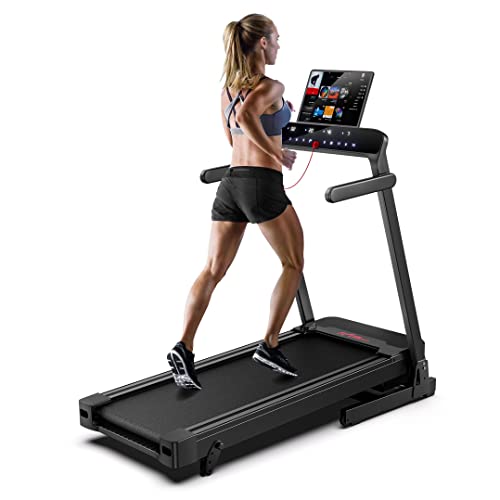The Treadmill Machine: An Educational Guide to Your Fitness Journey
The treadmill machine has become an indispensable tool in modern-day fitness routines. Whether one is an experienced professional athlete or a newbie attempting to get into shape, a treadmill provides a convenient and effective way to accomplish fitness objectives. This article will check out the different elements of treadmill machines, their advantages, various types readily available, and standards for effective usage.
Advantages of Using a Treadmill
Treadmills use many physical and psychological health advantages that add to overall wellness. Some key advantages consist of:
- Cardiovascular Health: Regular use of a treadmill helps in enhancing heart health by enhancing the heart muscles and enhancing flow.
- Weight-loss: By taking part in constant cardiovascular exercises, individuals can burn considerable calories, aiding in weight loss and management.
- Joint-Friendly Exercise: Treadmills supply a regulated environment that enables users to adjust speeds and inclines, making it easier on the joints than operating on tough surface areas.
- Convenience: Treadmills are particularly useful for those who reside in areas with adverse weather, as they can be used inside year-round.
- Adjustable Workouts: Many modern-day treadmills come equipped with programs and features that permit users to individualize their exercises for varying intensity levels.
Health Benefits Overview
| Benefit | Description |
|---|---|
| Cardiovascular Improvement | Enhances the heart, enhancing general flow and endurance. |
| Weight Management | Reliable calorie burning leading to weight reduction. |
| Injury Prevention | Decreased danger of injury due to adjustable surfaces and controlled environments. |
| Inspiration and Consistency | Supplies an indoor option that encourages regular exercise regardless of weather. |
| Improved Mood | Regular workout adds to the release of endorphins, improving psychological well-being. |
Kinds Of Treadmill Machines
While treadmills might appear uncomplicated, numerous types cater to different needs and preferences. Here are the primary classifications:
- Manual Treadmills: These need no power and are moved by the user's effort. Resource take up less area and are quieter however can present a steeper knowing curve for novices.
- Electric or Motorized Treadmills: The most typical type, they feature automated programs for speed and slope. They are normally more flexible but need electrical energy to run.
- Folding Treadmills: Designed for those with minimal space, folding treadmills can be collapsed and kept away when not in use, making them ideal for studio apartments.
- Slope Treadmills: These machines offer the ability to raise the slope, simulating hill runs for a more efficient exercise.
- Commercial Treadmills: Built for heavy usage, these machines are usually found in fitness centers and gym and feature a series of functions and resilience.
Comparison of Treadmill Types
| Type | Power Source | Best For | Area Considerations |
|---|---|---|---|
| Handbook | None | Newbies, budget-conscious users | Low |
| Electric | Plug-in | Differed strength exercises | Medium to High |
| Folding | Plug-in | Minimal area users | Low |
| Incline | Plug-in | Extreme cardio and strength | Medium to High |
| Industrial | Plug-in | Regular gym use | High |
Tips for Effective Treadmill Use
To make the most of the advantages of a treadmill routine, here are a number of suggestions to think about:
- Warm-Up: Start every exercise with a 5-10 minute warm-up at a slow pace to prepare the body.
- Posture: Maintain an upright posture, keeping shoulders back and head up to avoid stress and injury.
- Interval Training: Incorporate numerous speeds during exercises (high-interval training) to improve cardiovascular physical fitness and burn calories.
- Usage Inclines: To further boost exercises, include incline options to imitate hill running, which builds strength in the legs.
- Stay Hydrated: Keep a water bottle close by, guaranteeing to drink before, during, and after exercises to remain hydrated.
Recommended Treadmill Workouts
- Beginner's Walk: Start at a moderate rate for 20-30 minutes, slowly adding speed as comfort increases.
- Hill Intervals: Alternate in between slope and flat surfaces, running uphill for 1 minute followed by walking for 2 minutes.
- Long-Distance Run: Target a stable rate for a prolonged duration (40-60 minutes), focusing on endurance.
- Speed Training: Change speeds every minute, beginning with a light jog to brief bursts of running to enhance speed and cardiovascular health.
FAQs
Q1: How typically should I use a treadmill for effective outcomes?
A1: It is typically recommended to utilize a treadmill a minimum of 3 times weekly for 30-60 minutes to see significant results.
Q2: Can I drop weight using a treadmill?
A2: Yes, with a mix of routine workout, a balanced diet plan, and portion control, utilizing a treadmill can contribute significantly to weight reduction.
Q3: Do I require to warm-up before using the treadmill?
A3: Yes, heating up is essential to prepare your body, reduce the risk of injury, and enhance workout efficiency.
Q4: Is running on a treadmill as efficient as running outdoors?
A4: Both have advantages, but a treadmill allows for regulated environments, avoiding weather-related disruptions, and might have less impact on the joints.
Q5: Can a treadmill aid with bodybuilding?
A5: While mainly a cardiovascular tool, changing slopes can help engage and strengthen specific leg muscles.
Treadmill machines are versatile and can be an important part of a physical fitness journey. By understanding the different types, advantages, and reliable use methods, people can tap into the complete capacity of this devices. Whether going for improved cardio health, weight management, or enhanced mental wellness, a treadmill serves as a trusted companion on the roadway to physical fitness.

